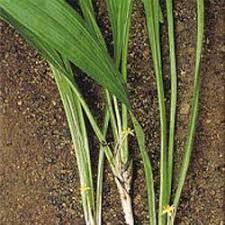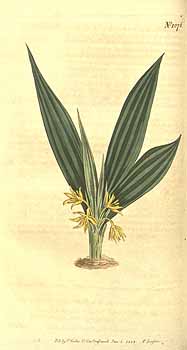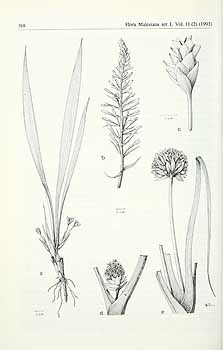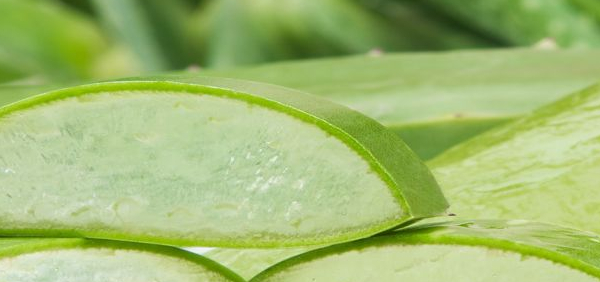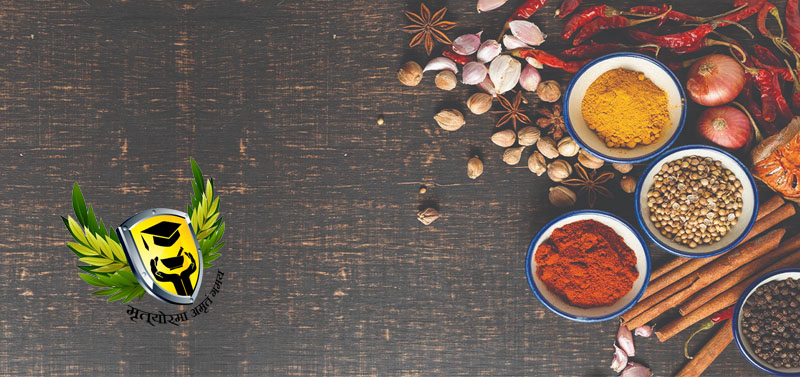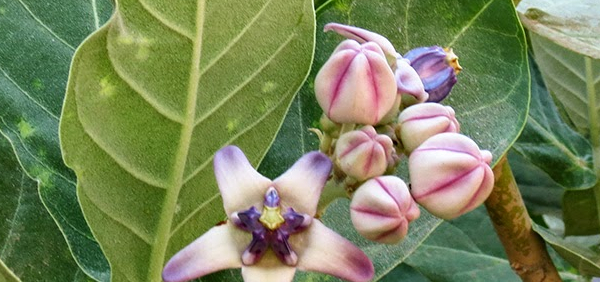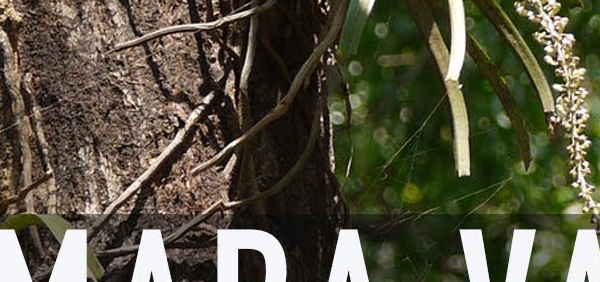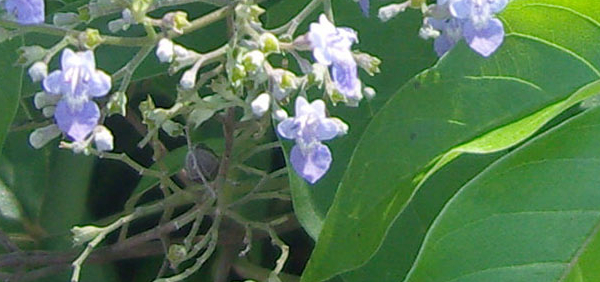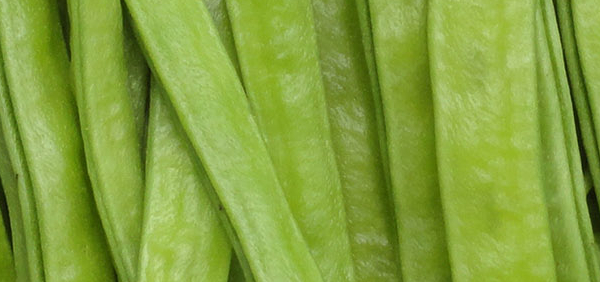talamulika :
 Curculigo orchioides Gaertn. (family Amaryllidaceae) is an endangered rasayana herb which is popularly known as "Kali Musli". The plant is native to India, and holds a special position as a potent adaptogen and aphrodisiac in Ayurvedic system of medicine. It is an important ingredient of many Ayurvedic preparations and is considered to have aphrodisiac, immunostimulant, hepatoprotective, antioxidant, anticancer and antidiabetic activities. Various chemical constituents like mucilage, phenolic glycosides, saponins and aliphatic compounds from the plant have been reported. The plant is also considered as an important component of various herbal preparations of the Chinese and Kampo medicine.
Curculigo orchioides Gaertn. (family Amaryllidaceae) is an endangered rasayana herb which is popularly known as "Kali Musli". The plant is native to India, and holds a special position as a potent adaptogen and aphrodisiac in Ayurvedic system of medicine. It is an important ingredient of many Ayurvedic preparations and is considered to have aphrodisiac, immunostimulant, hepatoprotective, antioxidant, anticancer and antidiabetic activities. Various chemical constituents like mucilage, phenolic glycosides, saponins and aliphatic compounds from the plant have been reported. The plant is also considered as an important component of various herbal preparations of the Chinese and Kampo medicine. HISTORICAL AND MYTHOLOGICAL REVIEW:
It is believed to have originated in the shady forests of AsiaTaxonomical Classification
Kingdom: Plantae - Plants
Subkingdom: Tracheobionta - Vascular plants
Superdivision: Spermatophyta - Seed plants
Division: Magnoliophyta - Flowering plants
Class: Magnoliopsida - Dicotyledons
Family: Amaryllidaceae
Genus: Curculigo
Species: Curculigo orchioides
Allied species:
Curculigo ensifolia, Curculigo brevifolia, Hypoxis orchioidesVERNACULAR NAMES
Sanskrit: Talmuli, Musikaparni, Talpatrika, BhumitilaEnglish: black musale , Golden Eye Grass, Orchid palm grass
Hindi: Kali musli, Krishna musli, Musali kand, Muslikand.
Urdu: musali, musli siyah
Telugu: nallathaadigadda, nela-tati-gaddalu, nelaathadi, nelatadi, nelathaatigaddalu, nilapthaaligaddalu
Bengali: Talmuli, Talusa
Marathi: bhuyimaddi, kaalimusalee, kalimusli, masal-kamdo
Konkani: मसळकांदो Masalkamdo
Oriya: Talamuli
Gujarathi: Kalirnusali
Tamil: Nilapanai
Malayalam: Nelappana
Kannada: nela tengu, nela thengu, nela-tati-gadde, neladaale, nelathaale gadde, thaala moolike
Punjabi: Syah musali, Musali safed,
Arabic: muslisiah
Assamese: Talmuli, Tailmuli
Chinese: Shan dang shen, Po lu men shen, Du mao, Xian mao shen, Di ziang, Ya guo zi, Hai nan shen, Xian mao.
French: Musale noir
Burma: ka.Ñhwut-nak
Nepal: कालेf मुसली Kalo musali, Musali kanda
Persian: musali
Sinhalese: Heen binthal (හීන් බින්තල්)
Tulu: ನೆಲಮುಂಡ nelamunda
Varities:
There are two varieties of Musli which are used for medicinal purpose, Safed Musli, and Kali Musli. Both are Rasayan drug of Ayurveda, and used to cure weakness, fatigue, and as a tonic.Definition
This is often called as Black gold because of its numerous medicinal values.Synonyms
Synonyms in Ayurveda: hemapuspi, musali- Talamuli - it resembles root of tala
- Deergaskandika- tuberous root is too long
- Hemapushpee- bright yellow flower
- Hirangpushpee- bright yellow flowe
- Kanchanapushpika - flower having color of gold
- Varahi - having same properties like plant varahi
Rasa: Madhura Tikta
Guna: Guru Picchila
Veerya: Ushna
Vipaka: Maduram
Karma: Pittahara
It cures morbid vata and pitta, improves complexion and is useful in general debility, deafness cough, asthma, piles, skin diseases, impotence, jaundice, urinary disorders, leucorrhoea and menorrhagia. Rootstock is the officinal part and it enters into the Ayurvedic formulations like vidaryadighrta, vidaryadi lehya, marmagulika and musalyadi churna. It is used extensively in ayurvedic formulations like Vidaryadighrta, Vidaryadi lehya, Marmagulika, Musalyadi churna etc. for a wide variety of ailments, especially as a general tonic and as an aphrodisiac
Cultivation:
Propogation:
Harvesting:
Phytochemistry:
PHARMACOLOGY:
It is used extensively in ayurvedic formulations like Vidaryadighrta, Vidaryadi lehya, Marmagulika, Musalyadi churna etc. for a wide variety of ailments, especially as a general tonic and as an aphrodisiac.Parts used for medicinal purpose
Leaves, Root, Underground rhizomes, Whole plant, ,Dosage:
5-15 grams of the powdered rootstockSubstitute:
In chyavana prasha, Krishna musli is used as a substitute for riddhi and vriddhiAdultrants:
In the absence of adequate supply of priority species, alternate species kali musli (Curculigo orchioides) is used for kshirakankoliControversy:
Curculigo orchioides Gaertn. syn. C. malabarica Wight, C. brevifolia Dryand belongs to the family Amaryllidaceae. Some botanists designate it as Hypoxis dulcis Stand under the family HypoxidaceaeCommercial value:
The demand of the raw materials and derivatives of the plant for the indigenous drug industries is satisfied mainly from the wild source, depleting the natural populationMorphology:
Drug occurs in transversely cut pieces of 2.5 to 5 cm long, cylindrical, straight to slightly curved, cut surface 1.0 to 4.5 cm in dia.; external surface blackish-brown, cut surface cream coloured; surface with numerous shallow wrinkles and transverse cracks; with a few rootlets and root scars; nodes and internodes prominent; taste, mucilaginous and slightly bitter.Histology:
Shows a narrow strip of cork, consisting of 5 to 7 rows of light brown cubical to rectangular cells; secondary cortex consists of thin-walled, parenchymatous cells, densely filled with starch grains and acicular crystals of calcium oxalate, either isolated or in bundles, in a few cells; a few small, round to tangentially elongated, lysigenous cavities also found scattered in this region; a few vascular bundles found embedded in cortical region with phloem towards outer side, and consisting of a few xylem elements; ground tissue consists of parenchymatous cells, some of which contain acicular crystals of calcium oxalate; numerous fibro-vascular bundles found scattered throughout the region, mostly towards peripheral region having phloem, almost encircled by xylem vessels having annular and spiral thickenings; starch grains simple, rounded to oval and also compound of 2 to 4 components, measuring 4 to 21 n in dia., present in cortical and central region, a number of deep red, resin canals found throughout the region, mucilage in the form of colourless mass found in a few cortical parenchymatous cellsGeographical distribution:
It has been recorded to occur in the subtropical Himalayas from Kumaon eastwards ascending to 1800m, the Khasia hills, Bengal, Assam, Konkan, Kanara, the western peninsula and Tamil Nadu extending south as far as Cape Comerin. It is also distributed in Sri Lanka, Japan, Malaysia and AustraliaECOLOGICAL ASPECT:
It is believed to have originated in the shady forests of Asia. The plant is distributed in plains and shows prostrate growth on moist fertile soil. It is found in all parts of India from near sea level to 2300m altitude, especially in rock crevices and laterite soilPlant conservation:
In the CAMP workshop at IIFM (June 1999) Curculigo orchioides was included in the IUCN category of “LOWER RISK near threatened”General Use:
Kali musli is tonic for health, and cures general weakness. It is also prescribed in the treatment of piles, jaundice, asthma, diarrhea, and gonorrhea. It is present in several herbal formulations for gynecological problems, and sexual weakness of males. Kali musli is bitter, appetizer, nervine, adaptogenic, sedative, anticonvulsive, and rogenic, and anti-inflammatory drugTherapeutic Uses:
Arsa, Vataroga, Karsya, KstaksinaSystemic Use:
It is useful in pruritus, skin diseases, asthma, bronchitis, jaundice, diarrhea, cuts and wounds, colic, vomiting, erectile impotence, spermatorrhoea, general weakness, burning, fatigue, piles and menorrhagiaAdministration:
Extracts and pillsPharmacological:
Clinical trials:
Research:
Precautions:
Toxicity studies:
In the recommended dose (5-15 grams of the powdered rootstock), no adverse reactions have been reported.Use in other system of medicine:
CONCLUSION:
Talamuli consists of dried rhizome of Curculigo orchioides Gmrtn. (Fam. Amaryllidacem), a small herb, upto 30 cm high with tuberous root stock, occurring wild in sub-tropical Himalayas from Kumaon eastwards, ascending upto 1830 m in Khasi hills, Manipur and the Eastern Ghats, also from Konkan southwards; drug is collected from two year old plants, washed well and cleared of rootlets, sliced and dried in shade.Photos of talamulika -
- Courtesy: http://tropical.theferns.info/plantimages/7/4/740c30a2b3a474788a22ffff46a0c57f7bbb2db7.jpg
- Courtesy: http://tropical.theferns.info/plantimages/c/2/c270e8559a8cf929545f1bad6855410eeeae8e19.jpg
- Courtesy: https://www.researchgate.net/figure/Curculigo-orchioides-plant-and-flower-inset_fig3_227224886
- Courtesy: http://www.esuppliersindia.com/amsar-pvt-ltd-/curculigo-orchioides-pr4782706-sCATALOG-swf.html
- Courtesy: http://plantillustrations.org/illustration.php?id_illustration=8122&SID=a37u0hgngl7ha0d7hl33ti98h7&mobile=1&code_category_taxon=9&size=1
- Courtesy: http://plantillustrations.org/illustration.php?id_illustration=162650&SID=a37u0hgngl7ha0d7hl33ti98h7&mobile=1&code_category_taxon=9&size=1
- Courtesy: http://plantillustrations.org/illustration.php?id_illustration=233675&SID=a37u0hgngl7ha0d7hl33ti98h7&mobile=1&code_category_taxon=9&size=1
KEY WORDS: Curculigo orchioides Gaertn. , talamulika
- » Classification and names of talamulika
- » Synonyms and definitions of talamulika
- » Drug Properties of talamulika
- » Chemical Constituents of talamulika
- » Standardization of talamulika
- » Parts used and Dosage of talamulika
- » Morphology and Histology of talamulika
- » Distribution and Conservation of talamulika
- » Cultivation of talamulika
- » talamulika in the market
- » Medicinal Uses of talamulika
- » Researches and clinical trails of talamulika
- » talamulika in other sytems of medicine
- » Ayurvedic formulations with talamulika
- » Images of talamulika


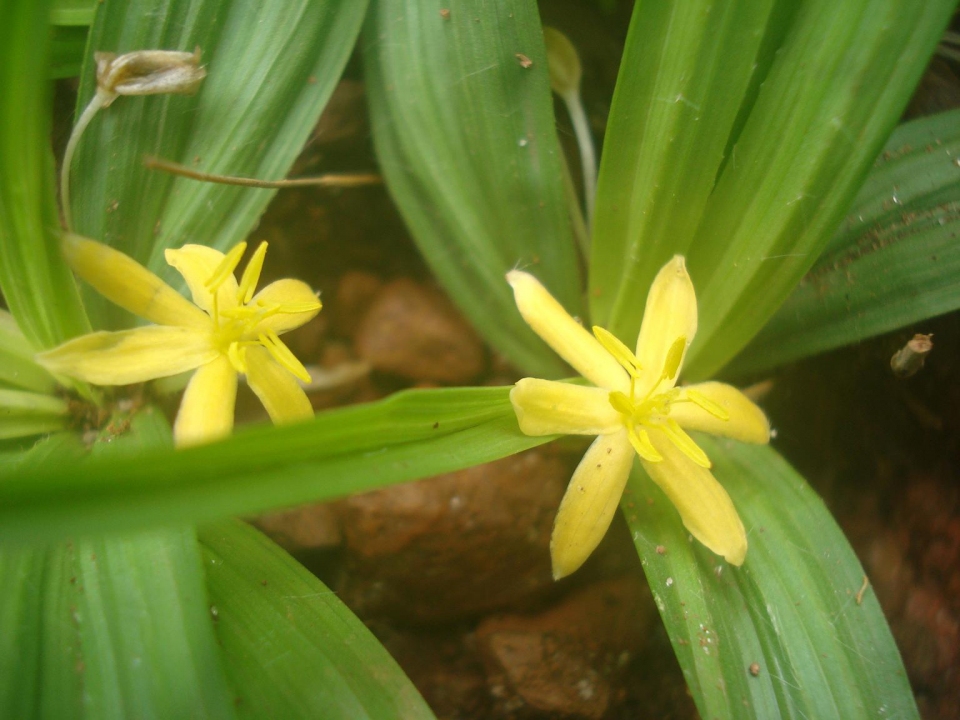
![Illustration of the flowering plant, including the bulb Photograph by: Roxburgh, W., Plants of the coast of Coromandel, vol. 1: t. 13 (1795) [n.a.]](admin/resizer/uploads/0254611001569225773.jpg)

